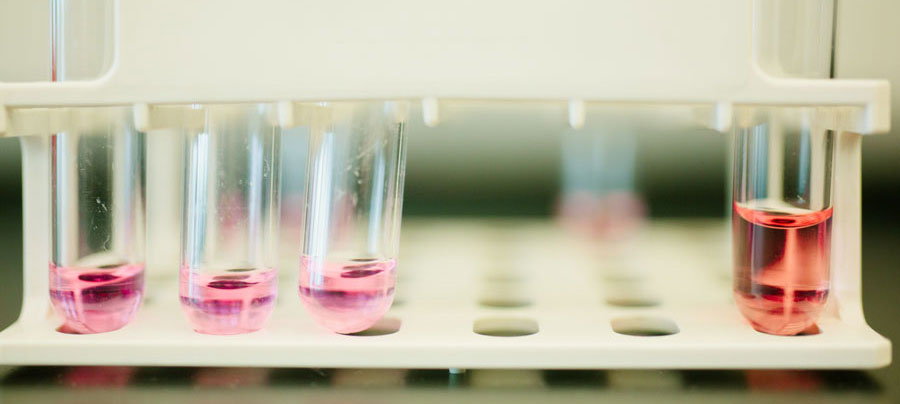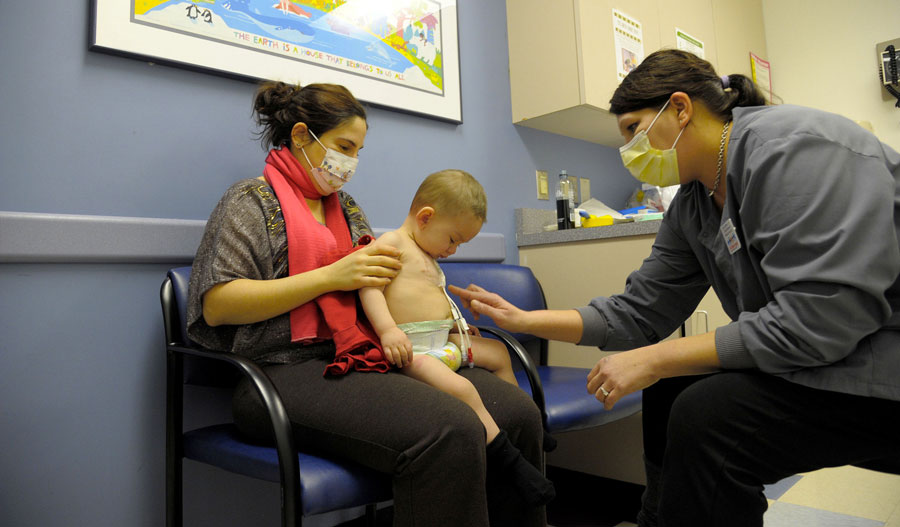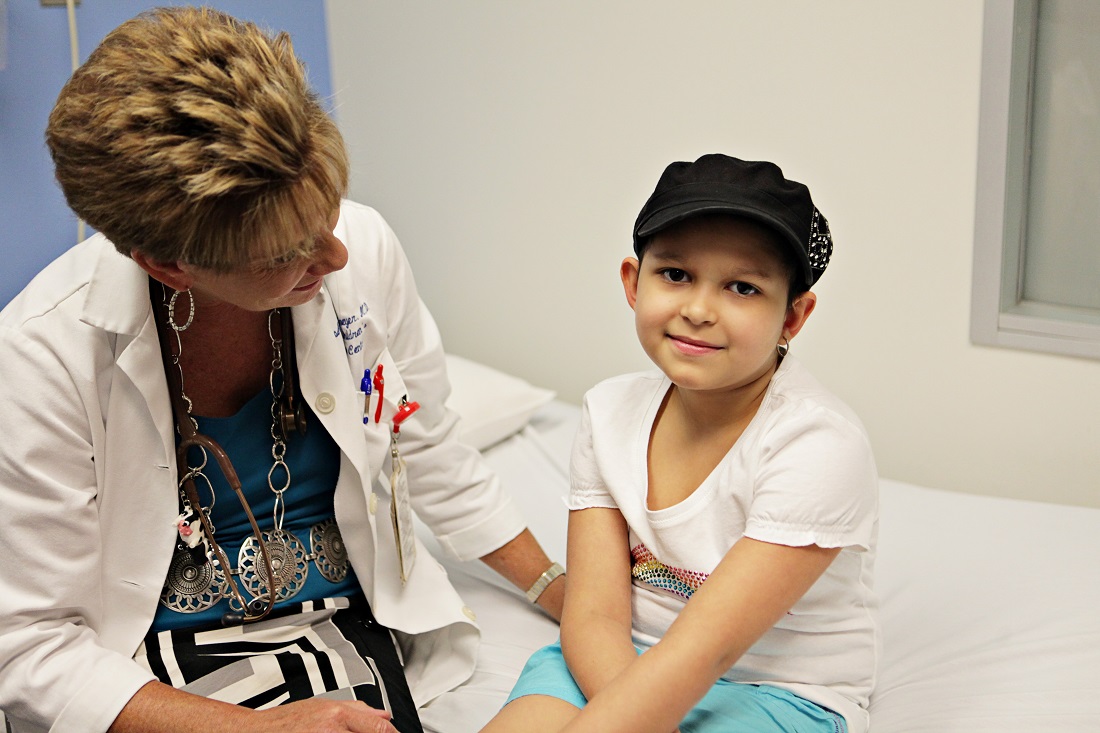BREAKING NEWS: FDA Approves Childhood Cancer Drug
We’ve got some spectacular news. Really, really big news.

In the last 20 years, only two new drugs have been approved that were specifically developed to treat children with cancer.
Yesterday, that changed. Now there are three.
What is a CRA?
An inside look at what St. Baldrick’s Infrastructure Grants are really doing. See all the 2014 Fall Grants.

Kelly Clickner assists a patient enrolled in a clinical trial at Albany Medical Center. They were able to hire Kelly as a full-time CRA with their first St. Baldrick’s Infrastructure Grant in 2007.
The Road to Success: Clinical Trials and the Children’s Oncology Group
The Children’s Oncology Group, or COG, has done some pretty awesome things to change the face of childhood cancer. The St. Baldrick’s Foundation has granted over $46 million to the COG so that kids with cancer can get the cures they need.

It’s been said that the Children’s Oncology Group, or COG, is arguably the National Cancer Institute’s best success story. The COG’s clinical trials have increased the overall cure rate for childhood cancers from under 10% 50 years ago to over 80% today.
This is a road to success, but there are many miles to go before every child can be cured.
NCI Meeting Explores Barriers to Drug Development for Pediatric Cancers
Why are there so few drugs available to fight childhood cancers? Why have no new drugs been developed and approved specifically for pediatric cancers in decades?
These questions dominated the agenda on February 21 when the National Cancer Institute (NCI) convened the 64th meeting of its Director’s Consumer Liaison Group in Bethesda, Maryland. Entitled “Barriers to Drug Development in Pediatric Cancer Research,” the all-day meeting included presentations from oncologists, government scientists, physicians, and members of the childhood cancer advocacy community.
St. Baldrick’s Provides More Than $46 Million to COG in Childhood Cancer Research Funding
The St. Baldrick’s Foundation is proud to have been honored at today’s meeting of many of the world’s best and brightest minds in pediatric cancer research.
The Children’s Oncology Group (COG), the world’s largest organization devoted exclusively to childhood and adolescent cancer research, thanked St. Baldrick’s at their annual fall meeting today for granting more than $46 million to date in support of the COG’s efforts to find cures and better treatments for all children with cancer.
St. Baldrick’s Foundation 2012 Summer Grants: Consortia and Cooperative

Sometimes many researchers at multiple institutions must band together in order to make real progress. That’s exactly what St. Baldrick’s Consortium Research Grants support. The largest of these grants is for the Children’s Oncology Group (COG), a cooperative research group with approximately 200 member institutions across the U.S. and beyond. Each institution receives a portion of this grant, distributed according to the number of patients treated on COG clinical trials, their best hope for a cure. In this way, the St. Baldrick’s Foundation funds virtually every institution qualified to treat childhood cancers. In addition, four new smaller consortia were funded this year, for a total of more than $10 million.
How a Rare Research Opportunity Saved a Child’s Life

16-month old Logan, a direct beneficiary of St. Baldrick’s “high-impact” initiative
Anthony Scott describes his son, Logan, as “your typical giggly, happy, goofy, 16-month-old silly kid.”
But his health has been far from typical. When Logan was born, he was diagnosed with Down syndrome and Transient Myeloproliferative Disorder (TMD), a disorder caused by abnormal blood cells that travel throughout the body. This disease could be life-threatening if Logan developed organ swelling, enlarged liver, or heart- and lung-function problems.
But the combination of TMD and Down Syndrome could also turn into acute myeloid leukemia (AML).
A Pill That Turns Off Childhood Cancer

(Photo courtesy of Children’s Hospital of Philadelphia)
Researchers are making progress with a drug that can literally turn off cancer cells for some patients with lymphoma and neuroblastoma — with the help of St. Baldrick’s donors!
This discovery is part of an important movement toward more targeted therapies — those that target only cancer cells, leaving healthy cells alone. These therapies avoid the often severe side effects — and sometimes life-long effects — of treatments that affect the whole body or large areas, such as chemotherapy and radiation. Instead, they zero in on a particular gene or target, stopping cancer cells from continuing to grow and spread through the body.
A Young Childhood Cancer Patient Gets a Fighting Chance

Liam with Kelly Clickner, RN, CCRC Clinical Research Associate at Albany Medical Center.
By Dr. Vikramjit Kanwar, pediatric oncologist and St. Baldrick’s infrastructure grant recipient
When Liam was born, he appeared to be a healthy baby. He spit up a little more often than expected, but neither of his parents were worried until he began vomiting almost continuously. They took him to the ER at Albany Medical Center and a CT scan showed his liver riddled with tumor.
St. Baldrick’s Research Outcome in Neuroblastoma

St. Baldrick’s researcher Dr. Alice Yu is developing a new immunotherapy treatment for kids with neuroblastoma.
For many years, doctors had only three ways to treat most cancers: surgery, radiation, and chemotherapy. A newer weapon in the fight against cancer is immunotherapy, harnessing the power of the immune system to attack cancer cells.
St. Baldrick’s donations helped fund research that has resulted in the first successful immunotherapy treatment for a childhood cancer, high-risk neuroblastoma.
Neuroblastoma is a cancer of the sympathetic nervous system. The average age of diagnosis is 2, and it’s rare in children over 10 years old.
Most patients have the high-risk form of the disease, and for years, only 1 in 3 of these children survived. With this new treatment, almost half may survive!
« Newer PostsOlder Posts »

 SBF
Tweets »
SBF
Tweets »